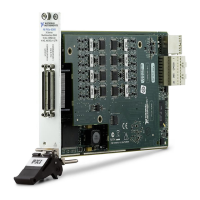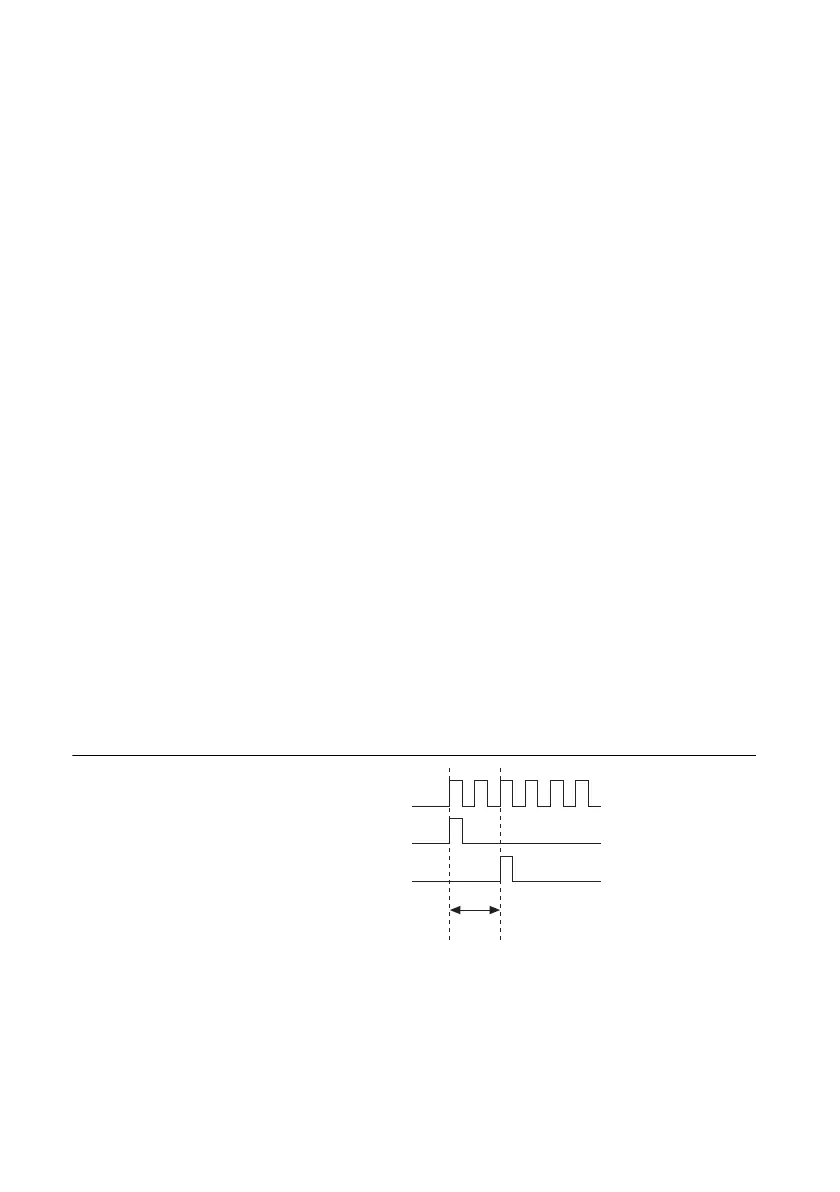6-14 | ni.com
Chapter 6 Digital I/O
• Counter n Internal Output
• Frequency Output
• DI Change Detection output
Several other internal signals can be routed to DO Sample Clock through internal routes. Refer
to Device Routing in MAX in the NI-DAQmx Help or the LabVIEW Help for more information.
Using an External Source
Use one of the following external signals as the source of DO Sample Clock:
• PFI <0..15>
•RTSI <0..7>
• PXI_STAR
• PXIe_DSTAR<A,B>
• Analog Comparison Event (an analog trigger)
Routing DO Sample Clock to an Output Terminal
You can route DO Sample Clock (as an active low signal) out to any PFI <0..15>, RTSI <0..7>,
or PXIe_DSTARC terminal.
Other Timing Requirements
The DO timing engine on your device internally generates DO Sample Clock unless you select
some external source. DO Start Trigger starts the timing engine and either the software or
hardware can stop it once a finite generation completes. When using the DO timing engine, you
can also specify a configurable delay from DO Start Trigger to the first DO Sample Clock pulse.
By default, this delay is two ticks of DO Sample Clock Timebase. Figure 6-7 shows the
relationship of DO Sample Clock to DO Start Trigger.
Figure 6-7. DO Sample Clock and DO Start Trigger
DO Sample Clock Timebase
DO Start Trigger
DO Sample Clock
Delay
From
Start
Trigger

